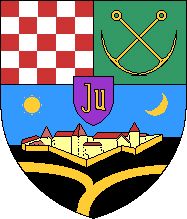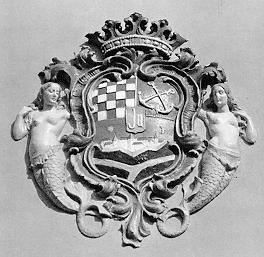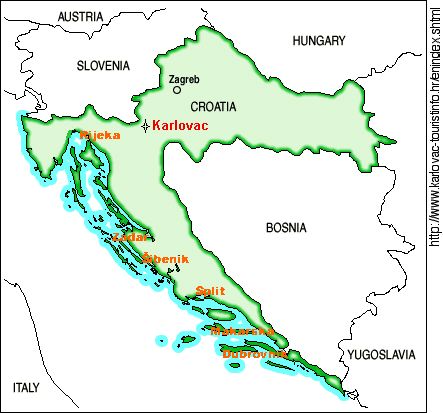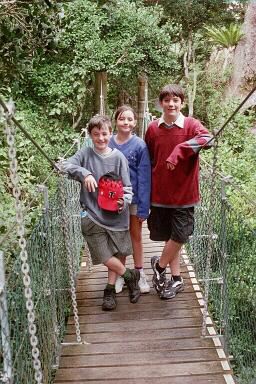GeneWeb cn.62
Savor & Aksionov of Karlovac
GeneWeb cn.62
Savor & Aksionov of Karlovac
Contents of this WebPage-1. Origins & History of Savor & Related Families¶. History & Images of Karlovac
62. Savor of Karlovac
GeneWeb Pages Affiliated with this Site-Genealogy 01- Main Page (Index)...Genealogy 10- Newman of Wessex...
SEE- Link: 15. Campbell Newmans (Bellevue Hill & Gold Coast)Genealogy 60- East European Links...1. Origins & History of Savor & Related FamiliesGenealogy 61- Aksionov of Vladimir & Stavropol§. Names Map- East European Connections60. Aksionov, Savor & Lenc
1.
Origins & History -
Savor & Aksionov of Karlovac
SAVOR (62) is a very old name in the Karlovac region, but may have distant links to the German surname SCHAFFER. The name Tomica SAVOR is of great antiquity, and there has been at least one leading member of the family by that name for centuries (§). Due to its close association with the Karlovac fortress against Ottoman invasion, the Savors used the first name Tomica or Tomislav after the early Slav hero-king who fought against the Turks, since the family is one of the several oldest in the town. Although the SAVORS were already a berger family, they rose to prominence when they acquired the brewery in the years leading up to the Great War. Even after the socialisation and nationalisation of industry, including the brewery, the Savors continued to prosper as technocrats under the communist government of Marshal Tito, with access to a summer house on the Adriatic Sea in Istria. A branch of the family emigrating to Florida in the United States continued the tradition of factory owning (VA, 1992).
Revolution began in Russia in 1905 due to repressive rule, foreign wars,
uncertain markets for Russian goods, and widespread famine. In 1914,
Dmitri AKSIONOV (60), then
aged 19 years, decided to enlist in the war - at least this was no worse
than starving to death at home. He may have been in Palace Square,
Moscow, on 1st August, when war was declared and ten thousand people gathered
together to acclaim the Czar. 'Much moved, he blessed them: last
fervent gesture of the last sovereign' (Olivier, 1979: 206). The
Czarina's mentor, the monk Rasputin, was assassinated in 1916, and the
army mutinied in February 1917, followed swiftly by abdication of the Czar
in a railway carriage on 15 March, institution of Bolshevik (majority)
rule, and finally by the assassination of the entire Romanov royal family
at Ekaterinburg on 16 July 1918. Many Russian soldiers were stranded
in central Europe at various 'fronts' when these events occured, and had
few alternatives other than to wait out the entire course of the war wherever
they could. Return to Russia was dangerous, and life there uncertain.
Many never went back. Dmitri Aksionov found work at the brewery of
Karlovac, in Yugoslavia, and stayed. During the next seven
years, he met and married Dorothea SAVOR, daughter of the owner of the
brewery.
§. Arms of
Karlovac [Savor families] -
 Savor et al. of Karlovac (1579)
Savor et al. of Karlovac (1579) 
'Where the Dinaric Alps sweep down to meet the Pannonian plain is the town of Karlovac. Here, on the left bank of the Kupa, the great Pannonian plain ends, and a mountain region extends to the Mediterranean Sea. Karlovac is at an ancient crossroads, between Dalmatia and Croatia, presiding over the only mountain road to the coast. Although it remains a cross-roads for rail and road traffic, 56 km from Zagreb, 130 km from Rijeka, 30 km from Metlika in Slovenia, and 40 km from Velika Kladus'a in Bosnia and Herzegovina, Karlovac is still a county town, its population according to the census of 1991 being only 60,000. It is also the administrative centre of the region that embraces the Kupa area, the western part of Z'umberak, Kordun, parts of Lika and Gorski Kotar.
'Karlovac is the youngest city in the Republic of Croatia. It was founded in consequence of a military and political decision of 1578, when the Austrian Empire, and indeed western Europe as a whole, had to be defended against waves of Turkish invasions. Karlovac is, then, one of those few cities that developed from the drawing board. The precise place where the principal fortress for the defence of Croatia and Carniola was to be built was chosen by the Archduke of' Styria, Commander in Chief of the Military Frontier, Karlo of Habsburg. It was from him that the city derived its name: Karlovac, also known as Karlstadt, and Carolstadium. The building of the fortress ('Festung Karlstadt') began on July 13, 1579. By the following year it was fully garrisoned, with inhabitants subsequently coming in from outlying villages threatened by the Turks.
'Only fourteen years after the fort was constructed, the Ottoman forces suffered a decisive defeat near Sisak (1593). Nearly a century later came another more important defeat at Vienna (1683), and by 1718 the political and military balance of power in this part of Europe had undergone profound change. Karlovac lost its role as a military fortress and became a commercial city. Thanks to its position, it became an important trading centre for South East Europe, handling much of the trade that went on between Hungary and the northern Adriatic. Indeed, the period from 1718 to the building of the Zagreb-Rijeka railway line in 1873 was a golden age for the city. It created an economic base that enabled the middle classes of Karlovac to play an important role in the political and cultural life of Croatia. International economic, political and military turmoil within the Habsburg Empire led to instability, depression and decline in the years to the end of the First World War. These were years of migrations and immigrants, establishing links between many East European nationalities. During this period a small enclave of emigrants [incl. SAVORS*] located itself in Louisiana in the United States, whilst newcomers to Karlovac included refugees from the Russian famine [incl. AKSIONOVS*] who replaced some of the older families who had left.
'At the beginning of the 20th century, Karlovac acquired some of the features of an industrial city. Six major industries were developed, beginning with textile and leather-working handicrafts, later joined by brewing, brick-making, the timber and wood industry, and metal working. By the second half of the 20th century, Karlovac had become a vital industrial centre.
'A year after the first democratic elections in Croatia (1990), Karlovac
suddenly found itself on the frontline of civil war. Up until August 1995,
the occupied part of Croatia began only three or four kilometres from the
centre of the city, in the barracks and military training grounds that
the Yugoslav Army had handed over to rebel Serbs. In the war for Croatian
independence, Karlovac suffered very considerable damage, particularly
the southern, or south-eastern, parts of it: Kamensko, Turanj and Logoris'te
were razed to the ground. The centre of the city was seriously damaged,
including the City Hall and numbers of civilian buildings. Human casualties
were very high, with several hundred people losing their lives.


¶. Map of Croatia [Pannonia & Dalmatia] > Strategic Location of Karlovac
'The FORTRESS OF KARLOVAC, other than the Tower of Dubovac (above right), is only partially preserved. However, the ground plan of the city, which was built within a six-pointed star bounded by moats, still exists. Also untouched is the grid of the original ten streets which intersect each other at right angles, with their 24 planned blocks of houses and the square in the centre. Both plan and execution make Karlovac a monument of Renaissance city planning and defensive architecture. Because frequent fires destroyed the Renaissance buildings, today's Karlovac, in the centre and in the one-time suburbs, is largely a Baroque city. Whilst there are no palaces, commoner's houses form an aesthetic whole that can be seen in Radic', Haulik, Pres'ern, S'imunic' and Krizanic' streets and, in the suburbs, in Gaj Street (Gajeva ulica).
'THE PROMENADE is one of the prime features of Karlovac. When the fortress was decommissioned in 1884, a row of horse chestnuts was planted around the outer edge of the moat designed by the Renaissance planner (believed to be Martin Gambon). This gave emphasis to the shape of the six pointed star within which the city was built. When the ramparts were destroyed and the moats partially filled in, this line of trees along the moats remained the most important clue to the historical function of the city. Even by European standards, this ring girding the city is a unique promenade. It is about 2,500 metres long, and can be covered in about an hour at an easy walking pace. Most inspiring is the Grand Promenade (or Velika promenada). It is defined both by a row of ten middle-class houses, villas from the second half of the l9th century, and by five rows of chestnuts. The complex is a reflection of the urban achievements of old Karlovac, most beautiful of inland Croatian cities. From this promenade, and the park along the Korana, Karlovac has earned its reputation as 'city of greenery'.

Karlovac > Home of the Savors

Plan of the City of Karlovac (drawn by Karl of Austria, 1579)

Sascha, Anoushka & Mischa (April, 2001) at O'Reilly's, Gold Coast
hinterland (Qld, Australia)